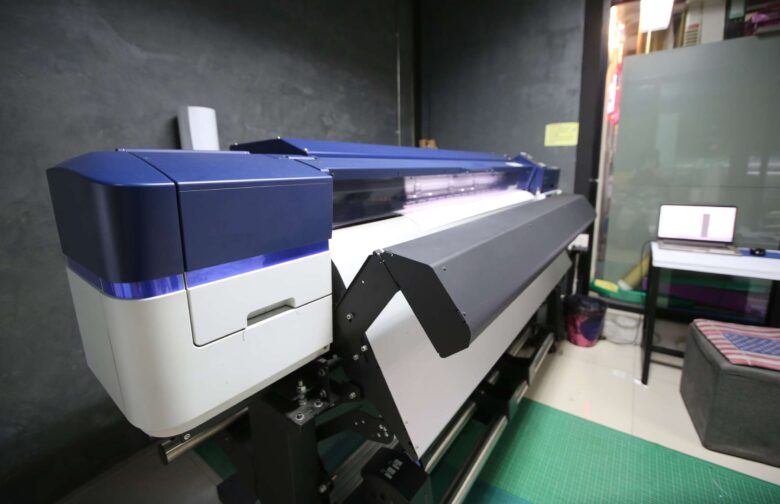Digital printing offers numerous benefits over traditional printing methods, making it a popular choice for businesses and individuals alike. In this article, we will explore the benefits of digital printing, including its cost-effectiveness, high print quality, and the ability to personalize prints through variable data printing. Whether you’re looking to print marketing materials, business cards, or personalized promotional products, digital printing provides a range of advantages that can help you achieve professional-looking, customized prints with ease. Let’s delve into the advantages of digital printing and how it can benefit your printing needs.
Faster Turnaround Time
In today’s fast-paced business environment, time is of the essence. That’s where digital printing shines with its impressive capability to deliver quick turnaround times. Here’s a closer look at why faster turnaround time is a major advantage of digital printing.
Traditional printing methods, such as offset and screen printing, often involve pre-printing processes like creating printing plates and adjusting ink settings. These upfront tasks can be time-consuming, requiring additional setup time before actual printing can begin. With digital printing, these pre-printing processes are eliminated.
Digital printing allows for the immediate cutting and binding of finished products. Once the digital file is ready, the printing process can begin without any further delays. This quick and hassle-free workflow eliminates the need for extensive setup time and allows businesses to produce printed materials on demand.
Overall, the faster turnaround time provided by digital printing is invaluable for businesses that require timely production of marketing materials, business cards, and other printed materials. By eliminating pre-printing processes and offering a more streamlined workflow, digital printing ensures that businesses can meet their printing needs promptly and efficiently.
Cost-Effectiveness
When it comes to printing, cost-effectiveness is always a top priority for business owners. Digital printing offers a solution that not only delivers high-quality results but also reduces overall costs and setup expenses.
Unlike traditional printing methods that require printing plates and extensive setup time, digital printing requires only a PDF document of the print design. This eliminates the need for costly setup expenses such as creating printing plates and adjusting ink settings. With digital printing, businesses can simply send their PDF document to a digital printing company, cutting down on both time and money spent on setup tasks.
Overall, the cost-effectiveness of digital printing stems from the elimination of setup expenses and the efficient printing process. Businesses can enjoy high-quality prints without breaking the bank, making digital printing a cost-effective solution for their marketing materials and printing needs.
Increased Print Quality
Firstly, digital printing can achieve exceptional print quality due to advancements in printing equipment and processes. Digital printers use advanced printhead technology, such as inkjet and laser printers, which can produce highly detailed and precise prints. These printers can also print in higher resolutions, resulting in sharper images, text, and graphics.
With traditional offset printing, print quality can vary depending on factors such as ink consistency and plate alignment. In contrast, digital printing eliminates these uncertainties and ensures consistent results from the first print to the last.
Designing artwork specifically for digital inks also enhances print quality. Digital inks offer unique features like Dimensional Clear ink, which can add textured impacts to printed materials. This allows businesses to create visually engaging and tactile print materials that stand out from the competition.
Variable Data Printing Capabilities
The benefits of variable data printing are significant. Firstly, it allows for shorter print runs. Businesses can now print smaller quantities of materials without sacrificing customization. This is particularly useful for targeted marketing campaigns or when testing new promotional materials. By printing only the required amount, businesses minimize waste and reduce storage costs.
Secondly, variable data printing increases cost-effectiveness. By producing personalized materials, businesses can deliver more targeted and relevant messages to their audience. This can lead to higher response rates, better customer engagement, and ultimately, a higher return on investment.
Lastly, variable data printing offers the flexibility to work with lower-order minimums. This means that businesses can take advantage of digital printing technology even for smaller projects or for producing materials in limited quantities. This opens up new opportunities for businesses that may not have had access to customization options with traditional printing methods.
Accuracy & Consistency of Colors and Image Quality
Digital printing technology ensures accuracy and consistency of colors and image quality, making it a preferred choice for businesses and individuals alike. One of the key advancements in digital printing is its ability to produce printouts with bright and vivid colors. Through precise color calibration and advanced inkjet or laser technology, digital printers can accurately reproduce colors, creating eye-catching materials that grab attention.
Additionally, digital printing allows for the production of crisp and vibrant images. With high-resolution capabilities and advanced printing techniques, digital printers can deliver images with exceptional detail and clarity. Whether it’s a photograph, graphic design, or logo, digital printing technology ensures that every element is reproduced with utmost precision, resulting in stunning visual output.
What sets digital printing apart is its ability to maintain consistent printout quality. Digitally calibrated presses enable the repetition of prints with outstanding accuracy, regardless of the print run size. This makes digital printing ideal for the consistent production of designs, ensuring that each printout matches the intended colors and image quality. Whether it’s a small batch or a large-scale project, digital printing technology guarantees consistent results, reducing the risk of variations or discrepancies.

Conclusion
In conclusion, digital printing offers numerous benefits and advantages that make it a preferred choice for businesses and individuals alike. Firstly, digital printing is cost-effective, with lower setup costs and the ability to print on demand, reducing waste and unnecessary expenses. Additionally, digital printing provides a faster turnaround time compared to traditional printing methods, allowing for quick production and delivery of printed materials.

